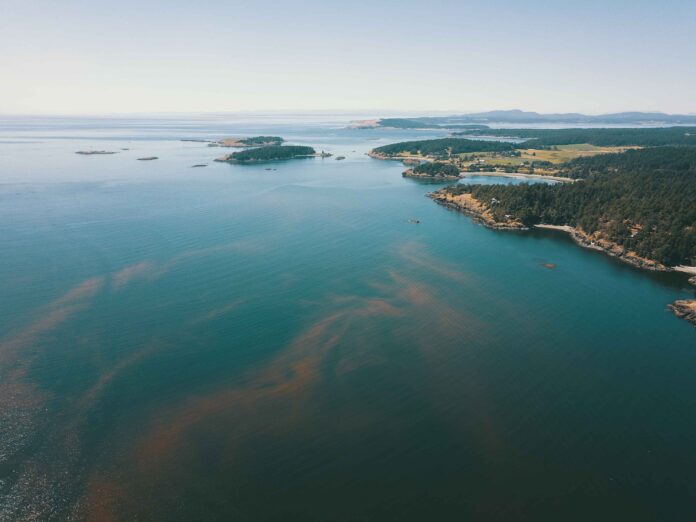The Scottish aquaculture industry has warned about the growing threat of harmful algal blooms (HABs), outlining they key to protecting farmed fish as climate change continues to impact the region’s waters.
Salmon farmers in the area are being urged to use data-led early detection and mitigation technology to support collaborative efforts to protect fish within their farms from HABS, which occur when microscopic algae populations grow.
HABs can be amplified by environmental factors and weather conditions, causing blooms, and creating problems for gill health. As global temperatures rise, the issue is becoming a more prevalent challenge for Scottish seafood producers.
Compared to overseas waters in salmon producing countries such as Chile and Canada, HABs in Scotland are typically less frequent but also more difficult to predict. The increased demand for monitoring and early warning systems reflects the sector’s ambition to mitigate the potential impacts of climate change, particularly any issues that could impact fish health.
Many producers are still using manual water quality sampling and microscopic analysis to detect whether HABs are present, but industry and experts agree that a greater focus on technology could hold the key to regular, real-time data collection and the development of early warning systems.
“HABs events are difficult to predict, but with regular monitoring, potential negative consequences can be managed and mitigated. One of the biggest priorities for farmers is caring for fish in the best ways possible, using all the tools and technologies available to them, such as monitoring procedures that make it quick and simple to identify risks,” Debra Brennan, fish health laboratory manager at Mowi, said.
Marine technology developer OTAQ is among a number of businesses in the aquaculture supply chain already looking at how the process of identifying and predicting HABs could be digitised. The company’s early warning system is expected to reach the commercial market later this year and uses a combination of artificial intelligence (AI), sensor technology, and digital microscopy to help identify potential issues accurately and quickly.
“Our goal is to automate the process of identifying harmful phytoplankton, allowing fish farmers to take action to protect their fish as early as possible. Workers on site might have a range of different abilities when it comes to recognising different species, but a combination of real-time, 24/7 data and digital image analysis will enable producers to prevent threats to welfare and reduce losses,” Chris Hyde, Chief Technology Officer at OTAQ, said.
“AI is a growing area of interest for marine operations, particularly in aquaculture, and this system will demonstrate the potential impact that advanced technology can have for the sector, in this case protecting stocks and minimising the health risks associated with HABs.”
“In dealing with HABs, early warning is key – having even a few hours’ notice, so that a robust mitigation programme can be put in place, can make a big difference to fish health. There are still challenges to overcome in adopting new technology, including digital connectivity at remote sites and the ability to handle and analyse vast amounts of data, but there are significant opportunities for producers to use technology and innovative mitigation tools to protect fish,” Sarah Riddle, the director of innovation and engagement at the Sustainable Aquaculture Innovation Centre, said.









